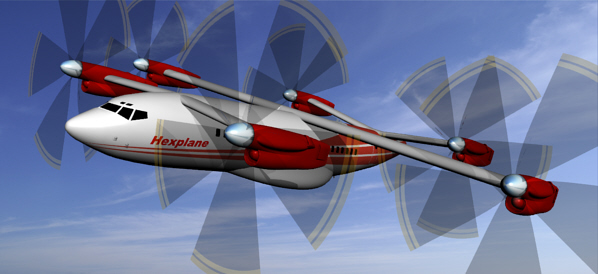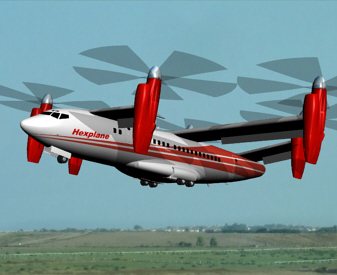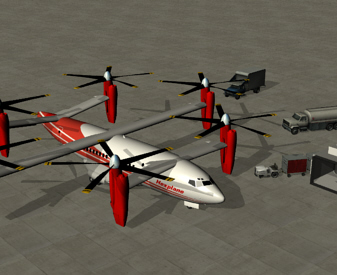COMMERCIAL
Faster, Further, Safer ...
The Commercial Hexplane transport can provide a superior solution to relieve Hub congestion.

"Hexplane" and "Hexplane Corp" are service marks of Hexplane Corp.
Highest speed
Greatest range
Unusually safe and redundant
Lower development cost
Low disk and power loading
Low VRS susceptibility
Highly efficient propellers
Higher HOGE performance
Finish mission with failed propulsion
Superior fuel efficiency



